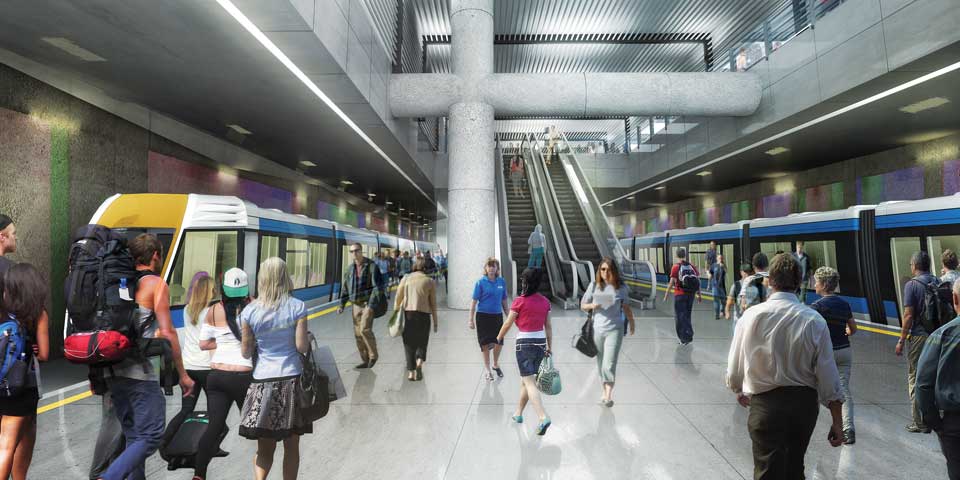Breaking the bottleneck at Britomart
Date: 15 January 2015
Article by Corrie Cook for Construction News
Auckland’s history is littered with failed public transport schemes, including ‘Robbie’s rapid rail’ – the Auckland Rapid Rail Transit Plan of the 1970s. Fifty years on, is history about to repeat itself?
When it opened in 2003, forecasts suggested that Britomart Rail Station in Auckland would reach capacity by 2020, but it’s almost there already. And while it remains a terminus, it can handle only 20 trains per hour despite individual passenger journeys increasing from 2.5 million when it opened to 11.4 million by June 2014.
Research shows that rail remains the most efficient way to carry commuters. Auckland Transport says rail carries 15,000 people per hour at the moment (which could double when trains can flow through Britomart Station, not stop and reverse out) compared to 2400 people per motorway lane per hour.
Auckland Transport expects that over 30,000 passengers will access the city centre by 2023 in the two-hour morning peak period, yet in some quarters, support for the scheme seems fragile at best. Auckland’s Mayor Len Brown is battling councillors and the National government to achieve a pared-down plan for a 3.4 km underground rail tunnel and two new stations, at a revised cost of $2.4 billion.
The City Rail Link has been designed to use the new electric trains serving the rest of the city, as well as Auckland’s western and southern suburbs. This link should mean train journeys into the city can be made in under 30 minutes for the majority of commuters, at least as they’re currently dispersed. Objections are based largely on the scheme being too expensive and that it won’t alleviate traffic congestion.
Supporters point out it will never be cheaper, and that had ‘Robbie’s rapid rail’ gone ahead in the 1970s, journeys around Auckland would have been far quicker than they are today.


